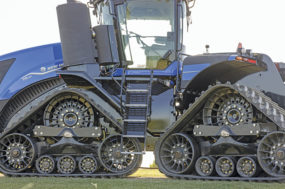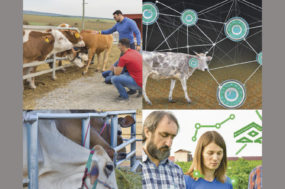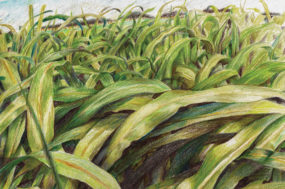While many use rotational grazing to increase their grass quality, many are unaware of the actual profitability that can be obtained by managing the process correctly.
Soil health
The growth of forage begins in the soil health. Compaction is one of the largest issues facing livestock producers; rotational grazing can help mitigate the damage hooves cause to the soil. By only spending a limited amount of time in one area and then moving on to allow the soil to heal, compaction is no longer a concern. Soil fertility is usually aided by applying fertilizers and nutrients to replenish what has leached out of the soil during grazing. Using rotational grazing helps mitigate the need for an extensive amount of money being put back into the soil.
Continuous improvement of soil health is essential to forage growth. Giving these acres a break after grazing for a short period of time allows the extra benefits applied, such as fertilizer, to take hold and perform optimally. Creating a healthy and stable root environment for the forage to grow in will create a more robust forage crop which provides more nutrients for a longer period for the livestock grazing it. Average cost assumptions for pasture maintenance is around $58 per acre, depending on the amount needed for land payment. When spending that much money per acre, it is crucial to optimize the soil.
Forage growth
Forage growth on acres utilizing rotational grazing methods increase anywhere from 30% to 70%. Increasing forage quality along with quantity allows for a better feedstuff during grazing season while also extending grazing season. With better grass available for a longer time, the amount of hay to be bought or fed throughout the winter season drastically decreases. Taking the money that would have been used to invest in winter hay and applying that back into the acres allows the ground to become profitable.
Winter grazing is obtainable using a strict rotational grazing program. It must be sliced out into sections to be rotated daily or every other day; this allows for grazing even during snow periods while taking into consideration muddy periods and snow drifts. The tallest sections should be saved for the snow season so the usable forage is more accessible during that time. Winter grazing should also only be utilized for cows with a body condition score (BCS) of at least 7. Due to the regenerative properties of rotational grazing, the forage grows a stronger, hardier product that will last far past the standard growing season as compared to a non-rotated acreage.
More cows, more profit
Having the ability to stock more head per acre while maintaining rate of gain allows producers to operate more efficiently. Cattle recycle 75% to 85% of the forage they consume. Intense rotation regimens allow the herd to more evenly distribute manure across the acreage, giving the recycled nutrients an even spread and increased viability to the soil.
Establishing an organized rotation plan will eliminate the guesswork and ensure that the profitability remains high. Each section should be mapped out with rotation dates established. This also allows for easier adaptability if the plan needs to change due to an unplanned circumstance; i.e., downed fence, a section with too much ground moisture, watering malfunctions, etc.
Input cost
Initial input cost for setting up acreage for a rotational grazing operation can vary from $10 to $70 per acre. While the kind of fencing and water source materials play a large part in the cost, the size of operation does as well. More acres allow the cost to be spread over a larger area, while smaller operations (under 100 acres) will see a higher cost per acre. The smaller acreage will take extra time to see the long-term profitability than a larger acreage, but the advantages are still considered to be grand.
Fencing materials can be determined upon type of ground and personal preference. Mobile fencing is often used for ease of movement to allow for easy change. Some operations may choose to utilize a more permanent style of fencing if the sector map has been established to maximize acre usage. Whether mobile or permanent, electric fence is typically the style of choice. This allows producers to have a solid fenceline without having the cost of stringing five strands of barb.
Whether a mobile watering unit or established units in each sector are used, it is likely the watering setup will be the largest input cost. If water needs to be run to each section, a clear plan needs to be developed and executed to provide a clear budget. Many producers utilize homemade tanks while creating their own pipe systems to transport water to each section. Water trucks may also be used as transport, but daily labor must also be accounted for.
Using rotational grazing to increase profitability is one of the best ways to get the most out of every grazed acre. Allowing growers to be flexible while lowering their feed cost has proven to be a successful model for operations of all sizes.










